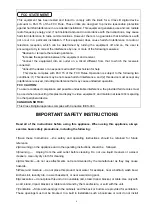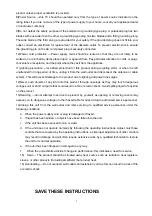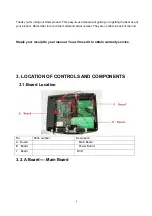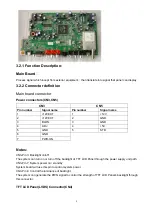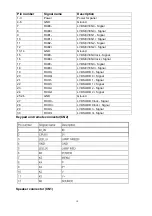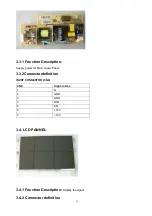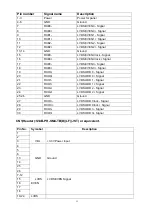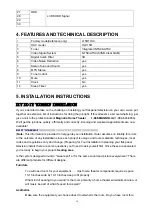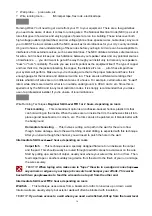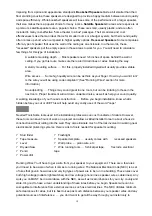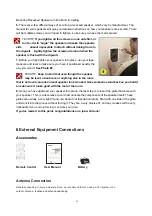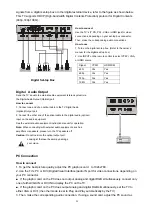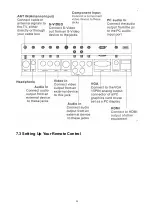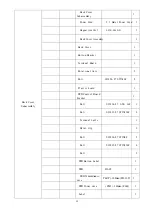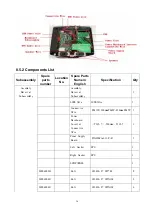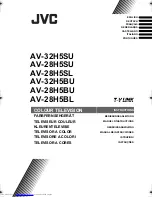
20
the anchor weight restrictions against the weight of your speakers, ensuring they can hold the speaker
weight.
4.
Once your mounting location is ready, ensure your wire is ready to be connected. Test your
speaker after connecting the wire by playing something through it. Once you get it to work, hang or
attach the speaker depending on the method being used.
Mounting Recessed Speakers: In-Wall and In-Ceiling
Intermediate Skill Level
—
2 to 3 hours,
depending on house
1.
Start by taking the template that came with your speaker. This will
usually be a cardboard cutout that shows you what size and shape your
hole needs to be. Once you remove any obstacles in the way of your
desired speaker location, lightly trace the outline with a pencil.
See
Photo #1
2.
Once you trace your outline, make a small hole inside the outline, and
use your wall probe to "feel" around for any obstacles.
TECHTIP:
You can use a variety of tools such as inspection mirrors, stud finders, or even
a coat hanger to check inside a wall without opening up a huge hole. Check your
intended speaker location thoroughly before you cut a full size hole!
Water and gas lines, air vents, drain lines
—
many of these will not register with a stud finder, but can
hide an inch or two behind the sheetrock. It's best to find this out with a small hole you can easily fix
rather than a full-sized hole that needs involved repair.
3.
After you verify the cavity is free of obstructions, use your drywall saw to begin cutting your hole.
TECHTIP:
Cut as you push in
—
cutting as you pull out can catch and damage some wall
coverings. You may also wish to score the area by using a utility
knife to trace your line before cutting.
Be sure to save the piece you just cut out
—
you can use it to patch
the hole if you ever decide to remove the speaker.
See Photo #2
4.
When your hole has been cut, you may be able to use this newly
found access to help run your wires. Once your wire is in place,
connect it to the speaker. This would be a good time to test your
speaker by playing something through it to make sure your wire and
speaker are in working order before you place it in the wall.
5.
Place the speaker into the hole, making sure there are no gaps
between the wall and the speaker. These spaces look bad and they
will decrease your sound quality. Take care to ensure your speaker
is not touching anything inside the wall or ceiling and that the drywall
shows no signs of bending or sagging.
See Photo #3
Summary of Contents for HLC15R - 15" LCD TV
Page 1: ...1 HLC15R TV 8888 128 ...
Page 3: ...3 12 3 Main board failure check 44 12 4 Pannel failure 44 12 MAINTENANCE 47 ...
Page 27: ...27 7 2 Back panel controls ...
Page 28: ...28 7 3 Setting Up Your Remote Control ...
Page 29: ...29 ...
Page 39: ...39 9 6 Backlight Backlight adjust the backlight 9 7 Function Burning Mode ...
Page 56: ...42 11 WIRING CONNECTION DIAGRAM ...
Page 62: ...48 Sincere Forever ...

